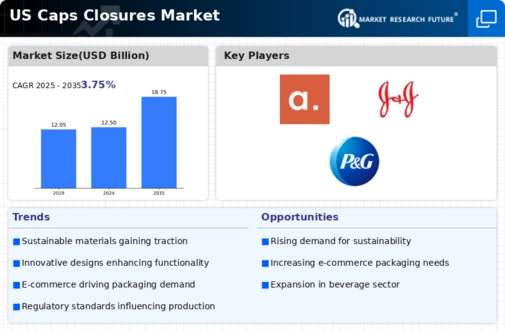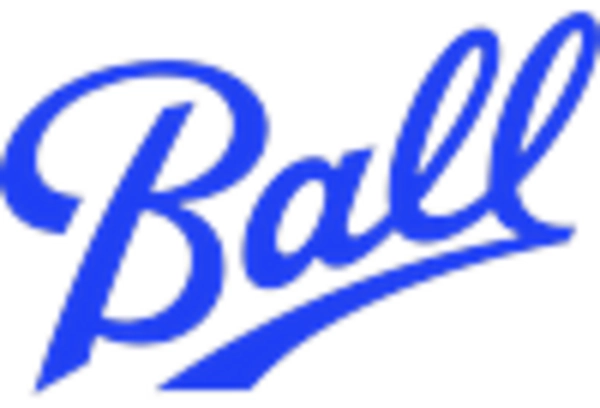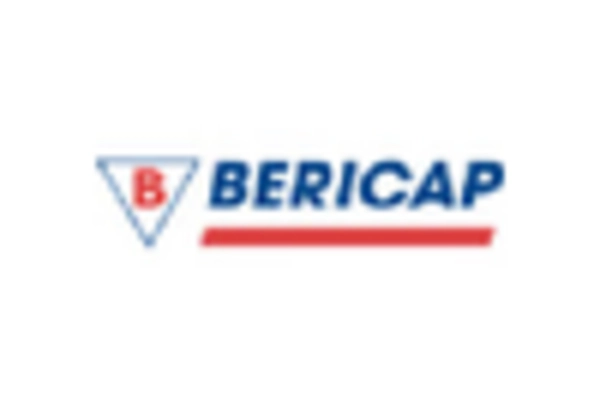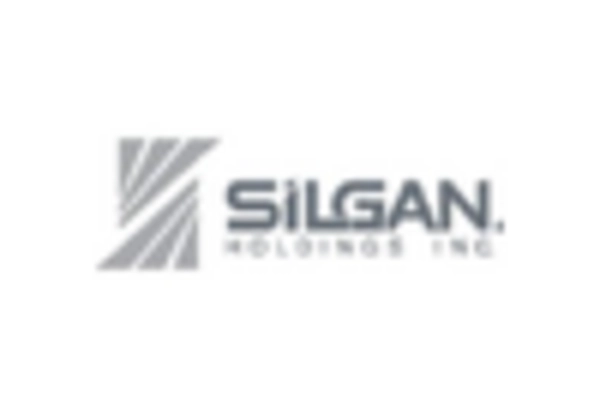Growth of the Beverage Sector
The beverage sector is a primary driver of growth within the caps closures market. With the increasing consumption of bottled beverages, including water, soft drinks, and alcoholic drinks, the demand for effective closures is on the rise. In 2025, the beverage industry is expected to contribute over $10 billion to the caps closures market. This growth is attributed to the rising health consciousness among consumers, leading to a preference for bottled drinks over sugary alternatives. As a result, manufacturers are focusing on developing closures that ensure product freshness and extend shelf life, thereby enhancing the overall consumer experience. The caps closures market must align its strategies with the evolving dynamics of the beverage sector.
Sustainability Trends in Packaging
Sustainability is a growing concern within the caps closures market. As consumers become more environmentally conscious, there is an increasing demand for eco-friendly packaging solutions. This trend is prompting manufacturers to explore biodegradable and recyclable materials for closures. In 2025, it is projected that sustainable packaging will represent approximately 25% of the caps closures market. Companies that prioritize sustainability are likely to gain a competitive edge, as consumers are willing to pay a premium for environmentally responsible products. The caps closures market must adapt to these sustainability trends to meet consumer expectations and regulatory requirements.
Rising Demand for Convenience Packaging
The caps closures market is experiencing a notable surge in demand for convenience packaging solutions. As consumer lifestyles become increasingly fast-paced, the need for easy-to-use packaging is paramount. This trend is particularly evident in sectors such as food and beverage, where single-serve and on-the-go options are gaining traction. In 2025, the convenience packaging segment is projected to account for approximately 30% of the overall market share. This shift is driving manufacturers to innovate and develop closures that enhance user experience while ensuring product integrity. The caps closures market must adapt to these evolving consumer preferences to remain competitive.
Regulatory Compliance and Safety Standards
Regulatory compliance is becoming increasingly critical for the caps closures market. As safety standards evolve, manufacturers are required to adhere to stringent regulations regarding materials and production processes. In the US, the Food and Drug Administration (FDA) has established guidelines that impact the types of materials used in closures, particularly for food and beverage applications. This regulatory landscape is expected to drive innovation, as companies invest in research and development to create compliant and safe closure solutions. By 2025, it is anticipated that adherence to these regulations will account for a 20% increase in operational costs for manufacturers. The caps closures market must navigate these challenges to ensure compliance while maintaining profitability.
Technological Advancements in Closure Design
Technological innovations are significantly influencing the caps closures market. Advanced manufacturing techniques, such as injection molding and 3D printing, are enabling the production of more complex and efficient closure designs. These technologies not only enhance the functionality of closures but also reduce production costs. In 2025, it is estimated that the adoption of these technologies could lead to a 15% reduction in manufacturing expenses for closure producers. Furthermore, the integration of smart technologies, such as tamper-evident features and QR codes, is becoming increasingly prevalent, providing added value to consumers and retailers alike. The caps closures market must embrace these advancements to meet the demands of modern consumers.

















Leave a Comment